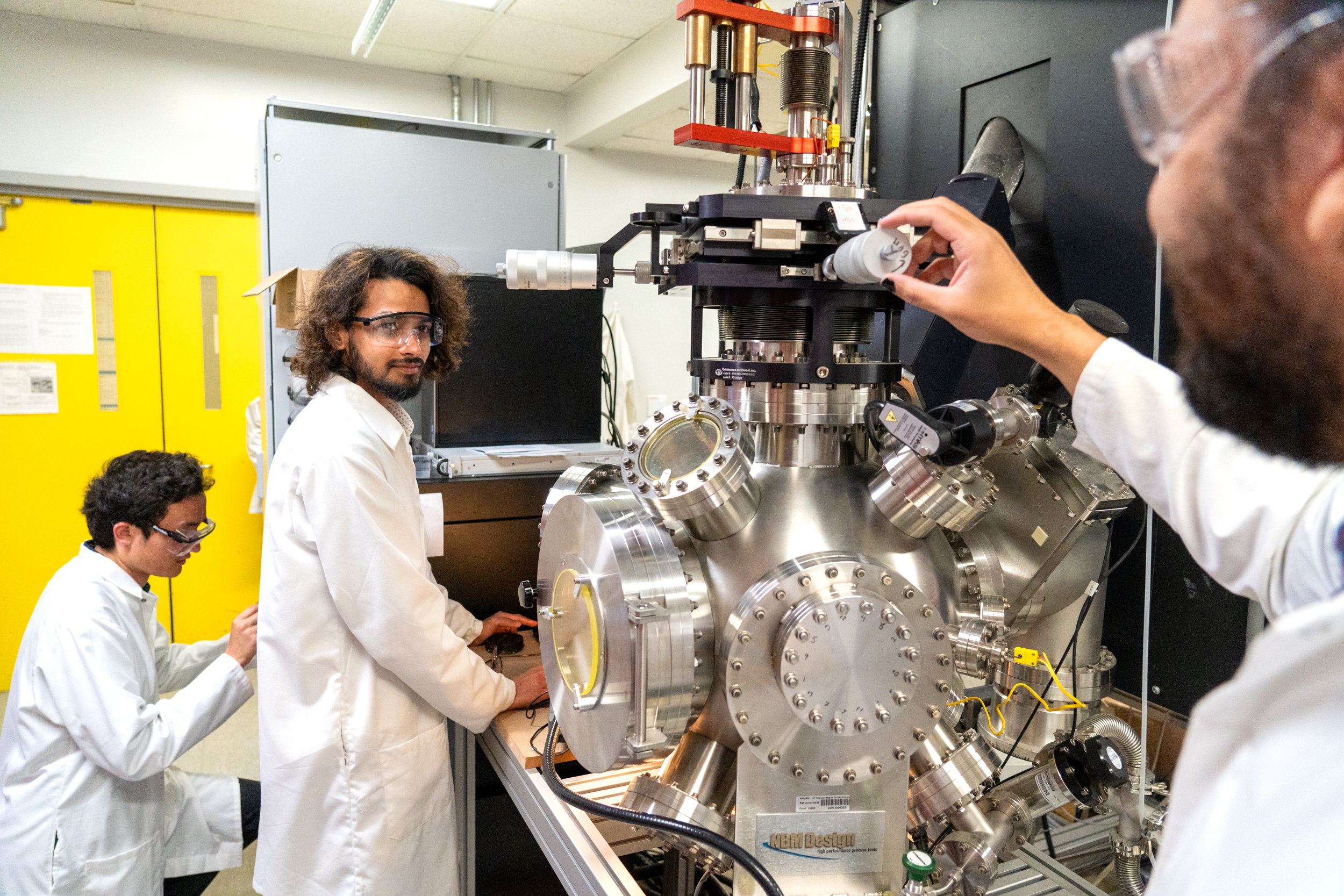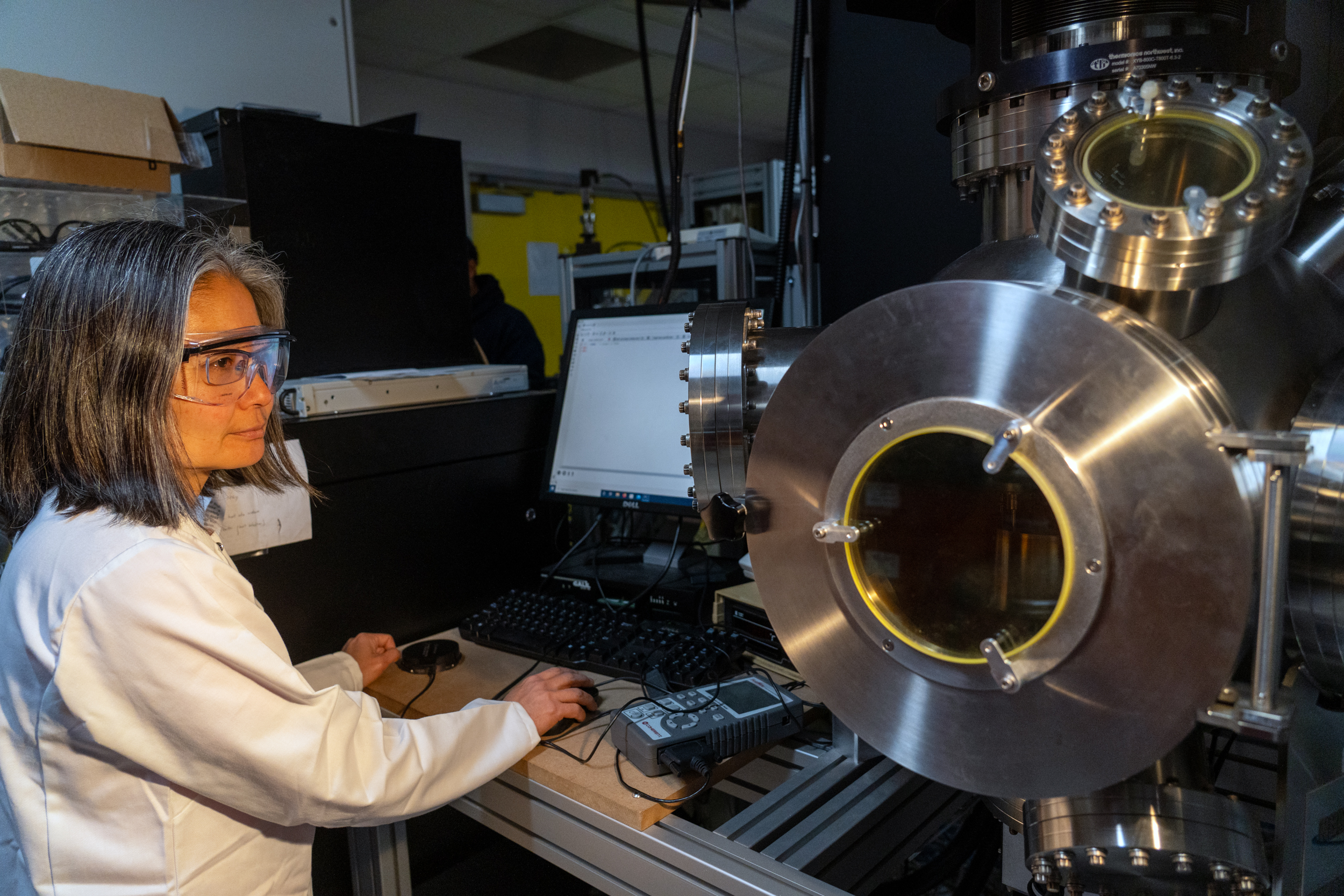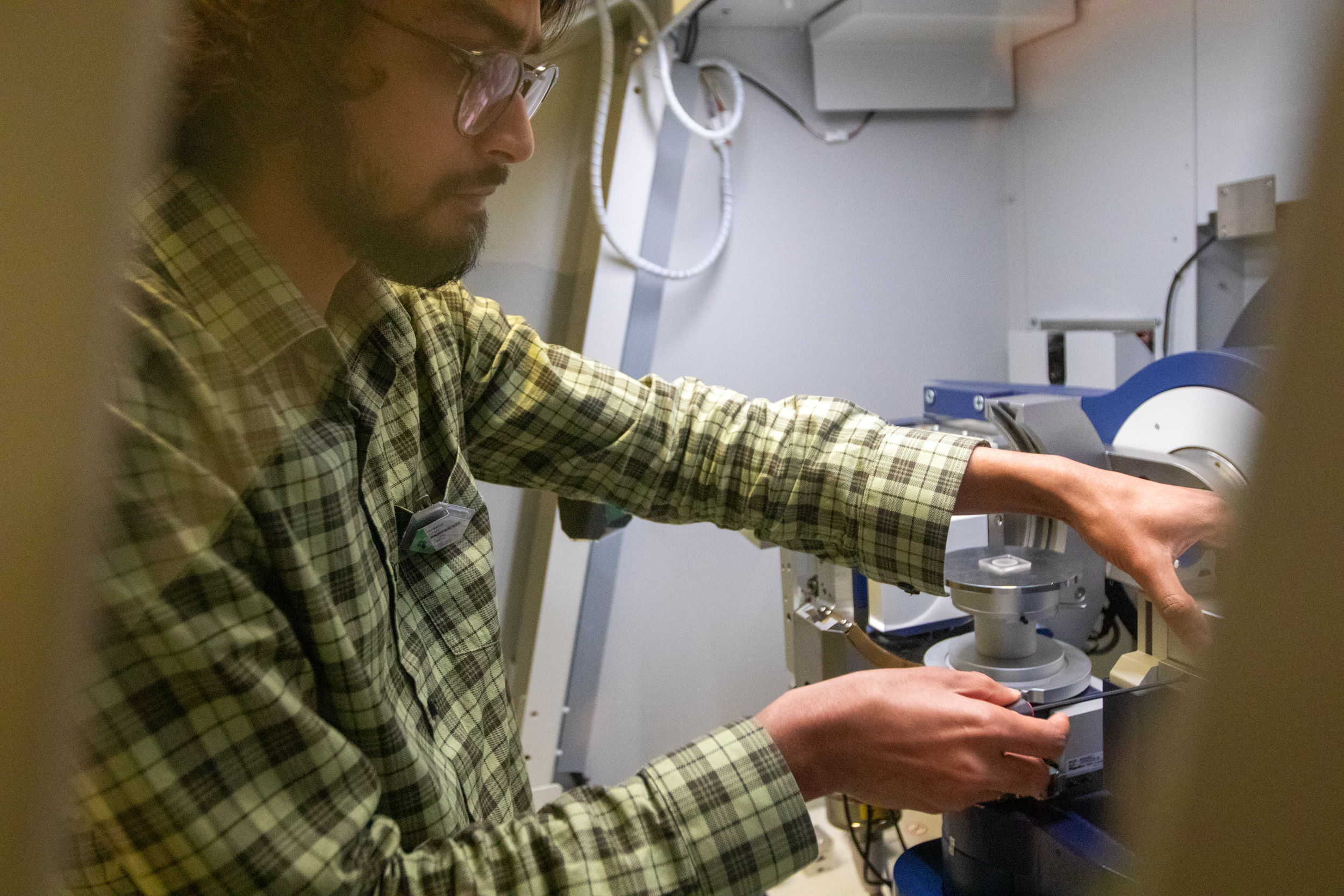The Takamura Lab Wins 2025 Grand Prize for Lab Safety in the College of Engineering

The Takamura Research Lab focuses on discovering new magnetic materials, exploring how their structures can be designed and controlled at the smallest scales. The team uses pulsed laser deposition, a technique that allows them to build artificial layered materials composed of stacks of materials with individual thicknesses only a few atoms thick. By studying both ferromagnetic (like the magnets you might find of a refrigerator) and antiferromagnetic (whose internal magnetic fields cancel each other out) materials, the Takamura lab seeks to identify new materials which can be utilized in neuromorphic computing, a new approach to electronics that mimics the energy efficiency of the human brain.
Dr. Yayoi Takamura stresses that “a safety culture is a foundational aspect of working in the lab.” Given the hazards they work with, including x-rays, Class IV lasers, cryogens, toxic gases and reproductive toxins, strict procedures are set in place to ensure members are safe, knowledgeable and supported in the lab. Students undergo extensive initial training, contribute to the writing and revising of standard operating procedures, and participate in refreshers during group meetings. Dr. Takamura also emphasizes that members should not just simply memorize safety rules, but understand why each step is necessary and what could happen if procedures are ignored.



These rigorous policies establish an organized and proactive lab environment. “Professor Takamura’s laboratory spaces immediately stand out, as they are always extremely clean and organized,” said Department Safety Coordinator Bill Doering. “It doesn’t take long to realize that this culture starts with Dr. Takamura, who actively trains her students to understand that safety comes first.” He praised her emphasis on asking questions and not rushing results at the cost of safety, adding that strong graduate student lab safety coordinators have also helped keep the lab’s culture self-sustaining due to their responsibility for regular lab upkeep, training and safety documentation.
Looking ahead, Dr. Takamura’s group plans to explore how these magnetic materials behave when created at the nanoscale, where their properties can change in unexpected ways. They also hope to collaborate with theorists and computational scientists to use modeling and machine learning in material discovery, opening the door to technologies that affect everything from computing power to everyday devices.